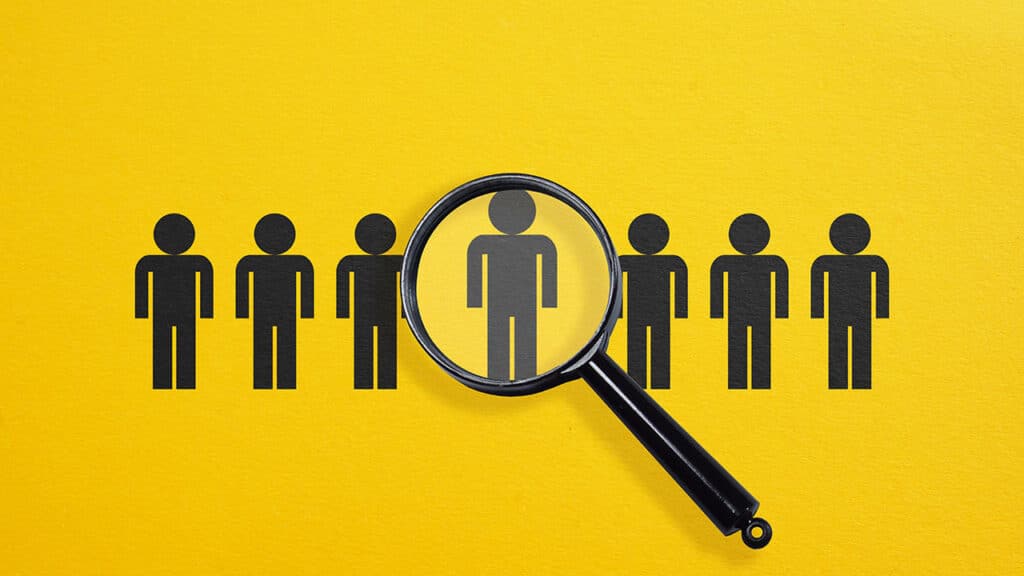What is a customer profile?
A customer profile is a detailed description of an ideal customer or customer group.
It contains information about the demographic characteristics, needs, purchasing behavior, interests, and challenges of customers.
The goal is to develop as realistic and tangible an idea as possible of the “typical” customer.

Why create a customer profile?
A good customer profile helps you to:
- Communicate in a targeted manner
- Use marketing budgets more effectively
- Create relevant content
- Align product developments with customer needs
- Make sales talks more efficient
Step-by-step guide: Creating a customer profile
Step 1: Clearly define your target audience
Before you create a profile, you should know who it is for.
Define your primary customer groups (e.g., end customers vs. business customers, B2C or B2B).
Step 2: Identify data sources
Use quantitative and qualitative data sources:
- Internal sources: CRM data, sales figures, website analytics, customer service inquiries
- External sources: Industry reports, competitive analyses, social media analyses
- Direct feedback: Interviews, online surveys, focus groups

Step 3: Record demographic characteristics
These include:
- Age, gender
- Marital status
- Place of residence/region
- Level of education
- Occupation and industry
- Income
Step 4: Record psychographic characteristics
These include:
- Personal values and beliefs
- Interests and hobbies
- Lifestyle
- Attitudes toward the product/brand
Step 5: Analyze purchasing behavior
Observe:
- How, when, and where do your customers buy?
- What sources of information do they use before making a purchase?
- How long does the decision-making process take?
- Which channels do they prefer? (e.g., social media, email, direct contact)

Step 6: Identify needs and pain points
Determine:
- What problems do your customers want to solve?
- What needs are met by your offering?
- What barriers are there to purchase?
Step 7: Create a customer profile (persona)
Summarize the information in a clearly structured profile.
Add:
- A fictitious name
- A profile picture (for better visualization)
- A quote: A typical statement that reflects the customer’s attitude or motivation
- A daily routine (optional) to put yourself in the customer’s perspective
Example of a persona
• Name: Tobias, 42 years old, self-employed IT consultant
• Location: Cologne
• Goal: Wants to work more efficiently and attract more customers
• Challenges: Has little time for acquisition, looking for automation options
• Purchasing behavior: Conducts extensive online research, values recommendations from colleagues
• Quote: “I need tools that take work off my hands, not create more work.”
Tips for creating a realistic customer profile
- Create multiple personas: You should develop different profiles for different customer segments.
- Update regularly: Customer needs change. Review their profiles regularly.
- Involve your team: Sales, marketing, and customer service have valuable insights. Work across departments.
- Base it on real data: Avoid speculation. A customer profile should be based on real information.
Mistakes to avoid
- Being too general: “25–60 years old, male or female, interested in technology” is not a helpful profile.
- Making assumptions without data: Don’t rely solely on gut feeling.
- One profile for all: Customers are different – differentiate between them.
- Failure to document: A customer profile must be documented in a way that is accessible and understandable to everyone.
Conclusion
A well-founded customer profile is more than just a nice marketing tool—it is the basis for customer-oriented thinking and action throughout the entire company.
It helps you understand your target group, address them specifically, and respond to their needs.
Creating it requires time and care at first, but the long-term benefits for communication, product development, and customer loyalty are enormous.
Invest in understanding your customers—it will pay off many times over.





